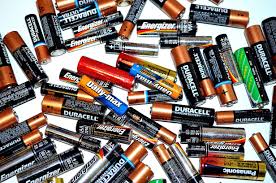When it comes to choosing batteries for your devices, understanding the different types and their specifications is crucial. Among the most commonly confused is 14500 battery same as aa. Though they may look similar, they have distinct differences that impact their performance and suitability for various applications. In this blog, we’ll explore whether the 14500 battery is the same as an AA battery, comparing their sizes, chemistry, and applications.
Understanding Battery Sizes and Types
1. Battery Dimensions:
The 14500 battery and AA battery may look alike, but their sizes are slightly different.
- 14500 Battery: This battery is often used in high-drain devices and has a nominal size of 14mm in diameter and 50mm in length. It’s a lithium-ion (Li-ion) battery, which means it has a higher energy density and can provide more power in a smaller size.
- AA Battery: The AA battery, also known as a double-A battery, typically measures 14.5mm in diameter and 50.5mm in length. AA batteries are usually either alkaline or NiMH (Nickel-Metal Hydride), which differ in energy capacity and discharge characteristics.
2. Battery Chemistry:
The chemistry of a battery affects its voltage, capacity, and overall performance.
- 14500 Battery: This is a lithium-ion battery with a nominal voltage of 3.7 volts. It has a higher energy density compared to AA batteries, which allows it to store more energy and deliver more power. Lithium-ion batteries are known for their long life and ability to maintain a stable voltage output.
- AA Battery: AA batteries can be alkaline or NiMH. Alkaline AA batteries have a nominal voltage of 1.5 volts, while NiMH AA batteries typically have a voltage of 1.2 volts. The energy density of AA batteries is generally lower compared to 14500 batteries, which means they may need to be replaced more frequently or may not last as long under heavy use.
3. Capacity and Performance:
Capacity is a measure of how much energy a battery can store and deliver.
- 14500 Battery: With a capacity typically ranging from 600mAh to 1000mAh, 14500 batteries are designed for high-drain devices. Their higher voltage and energy density make them suitable for applications requiring a lot of power, such as high-performance flashlights and electronic gadgets.
- AA Battery: The capacity of AA batteries varies depending on the type. Alkaline AA batteries generally offer a capacity between 1500mAh to 3000mAh, while NiMH AA batteries can range from 1800mAh to 2800mAh. Although AA batteries may have a higher capacity in terms of mAh, their lower voltage compared to 14500 batteries means they might not provide the same level of performance in devices designed for higher voltage inputs.
4. Applications and Compatibility:
Understanding the applications of each battery type helps in determining their compatibility with your devices.
- 14500 Battery: Due to its higher voltage and energy density, the 14500 battery is not interchangeable with AA batteries. Devices designed for 14500 batteries will not function correctly with AA batteries, and vice versa. The 14500 battery is commonly used in high-performance electronics where higher power output is required.
- AA Battery: AA batteries are one of the most common battery types used in everyday household devices, including remote controls, flashlights, and various electronic gadgets. They are widely available and can be used in a broad range of devices that are designed to handle their specific voltage and capacity.
Conclusion
In summary, while the 14500 and AA batteries may appear similar in size, they are not the same. The 14500 battery is a lithium-ion cell with a higher voltage and energy density, making it suitable for high-drain devices. On the other hand, AA batteries, whether alkaline or NiMH, have a lower voltage and different energy characteristics. Understanding these differences is essential for choosing the right battery for your devices and ensuring optimal performance.
